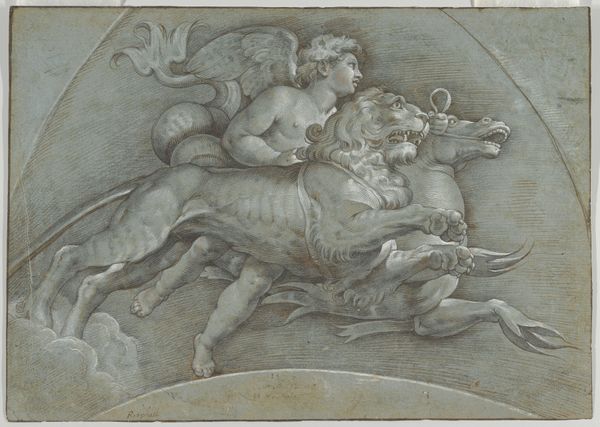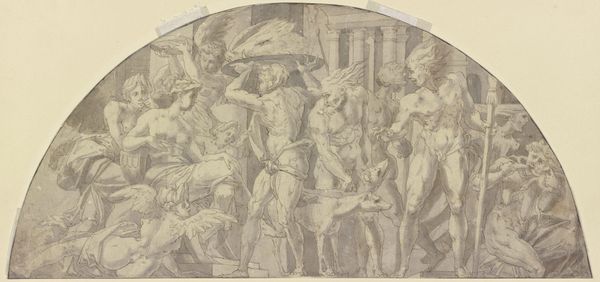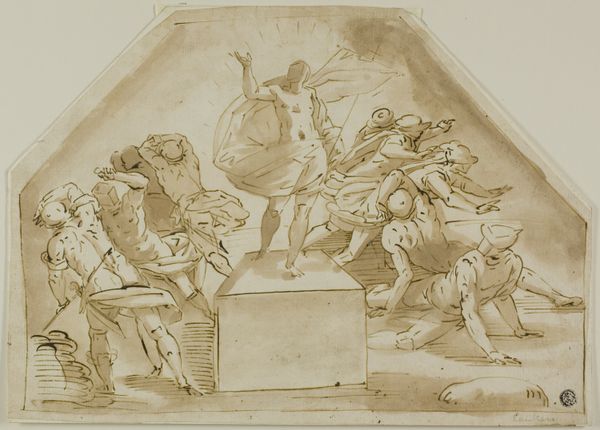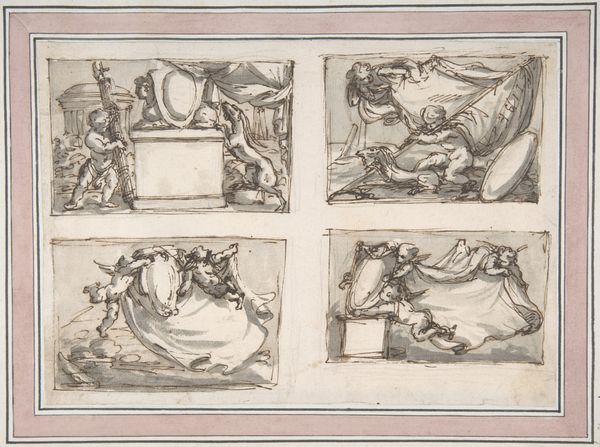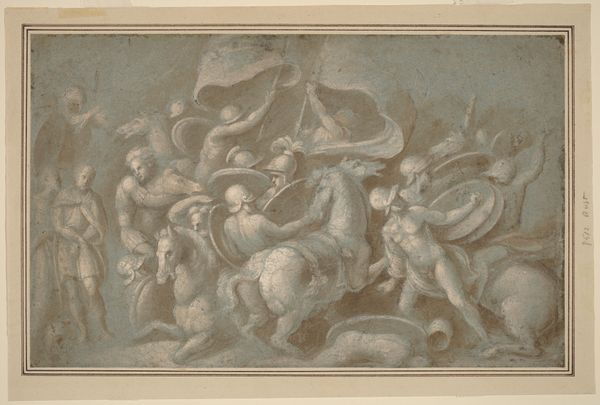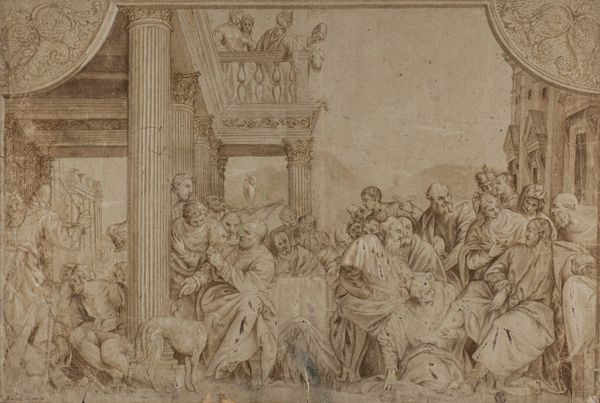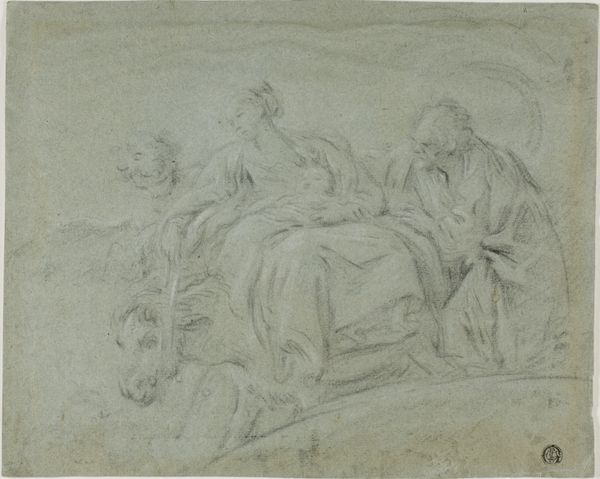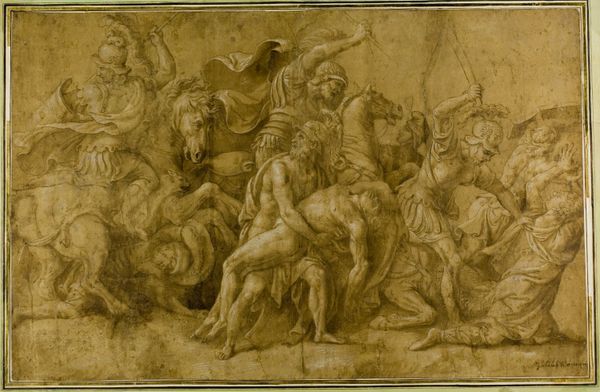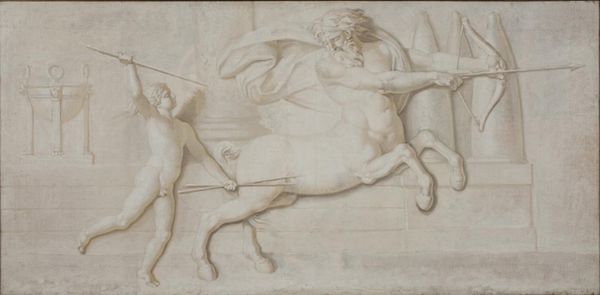
Design for Funerary Monument to the Marchese Francesco Gonzaga n.d.
0:00
0:00
drawing, print, relief, paper, ink, sculpture
#
portrait
#
drawing
# print
#
sculpture
#
relief
#
figuration
#
paper
#
historic architecture
#
form
#
11_renaissance
#
traditional architecture
#
ink
#
sculpture
#
men
#
water
#
history-painting
#
italian-renaissance
#
statue
Dimensions: 200 × 300 mm
Copyright: Public Domain
Editor: This is Raphael's "Design for Funerary Monument to the Marchese Francesco Gonzaga," created in pen and ink on paper. I find the composition so dynamic. All those figures in motion, it looks like it's about to burst out of the frame! What can you tell me about it? Curator: Well, this drawing gives us a peek into the fascinating world of Renaissance patronage and the political theater around death. Gonzaga was a significant figure; therefore, his tomb was meant to project power and lineage. Do you notice how Raphael evokes classical Roman imagery in this design? Editor: Yes, the figures remind me of Roman relief sculptures, and the two statues framing the relief also have a Greco-Roman look! Is that related to the Renaissance interest in classical antiquity? Curator: Precisely! Renaissance elites often used classical references to legitimize their rule and present themselves as heirs to the Roman Empire. A tomb like this would not just honor the deceased but also communicate a political message about the Gonzaga family’s status to visitors in the church where it would have been placed. It really raises the question of who that message was for. Editor: That makes a lot of sense. So, the tomb becomes a stage for displaying power, not just a memorial for the dead? Curator: Exactly. It's fascinating how even in death, figures like Gonzaga continued to exert influence through carefully crafted public images, shaped by both the artist and the family's aspirations. I also wonder about the politics inherent in a funeral monument; How might social class at that time affected one's funeral and funerary imagery? Editor: That is truly fascinating! It makes me consider that artwork reflects the patron's historical, cultural, and socio-economic context! Curator: Indeed! It underscores how art can act as a powerful medium for shaping public perception and reinforcing societal structures.
Comments
No comments
Be the first to comment and join the conversation on the ultimate creative platform.

